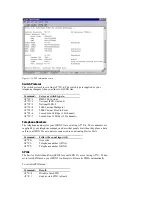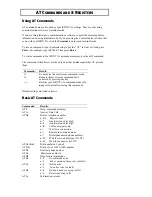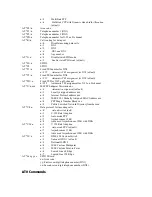
n=1 DMS-100
n=2 National ISDN-1 (default)
n=3 National ISDN-2
n=4 5ESS Custom Multipoint
n=5 5ESS Custom Point-to-Point
n=6 Leased Line 64 kbps (1 B-channel)
n=7 Leased Line 128 kbps (2 B-channels)
To enter your area code information, type AT*P0=xxx and press
Enter. In the place of xxx, type your area code.
To enter a telephone number for your ISDN TA, type AT*P1=xxx and
press Enter. In the place of xxx, type one of the telephone numbers for
your ISDN line. To enter a second telephone number, type AT*P2=xxx
and press Enter. Type the second telephone number in the place of xxx.
To enter the SPID for your first telephone number, type AT*S1=xxx
and press Enter. Type the SPID in the place of xxx. To enter the SPID
for your second telephone number, type AT*S2=xxx and press Enter.
Again, type the SPID in the place of xxx.
Once your numbers have been set, type ATZ! to resynchronize your
ISDN TA to the telephone company’s switch equipment. The alert
light will turn off when the ISDN TA is properly synchronized to the
telephone company switch. This may take one minute to complete.
These settings do not have to be saved using the &W command.
Where can I get access to Q.931 and PPP information
generated by my ISDN TA?
Open ControlCenter and click the Protocol Decode icon. A protocol
monitor program will then extract this information from your ISDN
TA.
When I dial an NT Server, call back doesn’t work with my
ISDN TA.
Make sure the BACP/BAP is enabled.
Open ControlCenter and click the Configuration Manager icon. Then
click the Advanced Configuration button.
Click the Data tab. Then click the PPP Settings button. If a check
mark does not appear next to “Enable BACP/BAP,” click it to select it.
A check mark will appear in the box next to the item when it is
selected.
When I use Asynchronous 128K, I cannot connect to other
ISDN products that support BONDING.
Asynchronous 128K and Advanced Asynchronous 128K are both
3Com proprietary protocols. You must use the same type of ISDN
equipment on both sides of the connection.






























